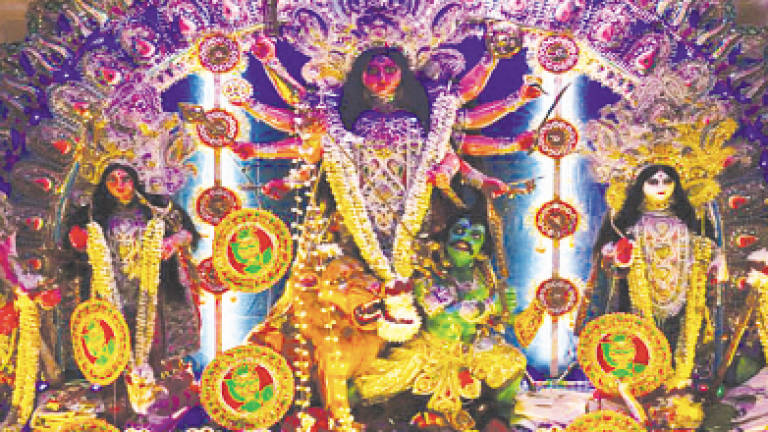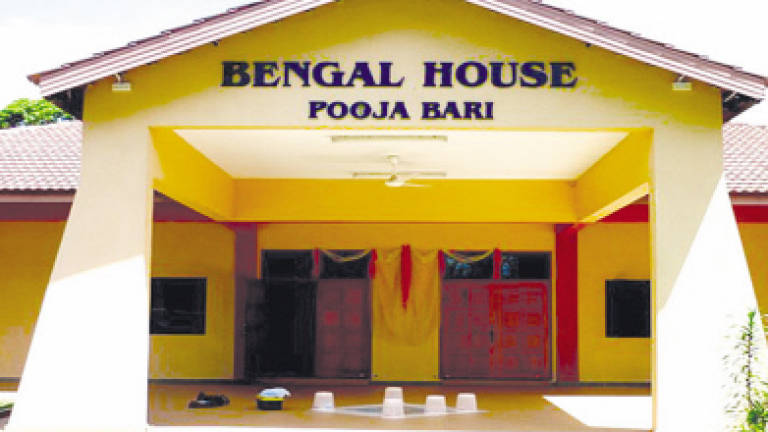Malaysian Bengalee Association


THE earliest Bengalis in Malaysia came from the central and eastern parts of Greater (undivided) Bengal. Leveraging the established track record (explained in The Bengali homeland(s)), they were recruited by the British colonial system as:
a) clerical staff and lower-rung supervisors, both in the government and emerging commercial sectors;
b) conductors and dressers in the rubber plantations;
c) LMP, LMF and LMS (licensed medical practitioners) doctors and medical service facilitators;
d) engineers and technically competent assistants in civil construction projects.
The earliest Bengali immigrants settled down in Negri Sembilan, Selangor, Malacca and a few in Penang.
Prominent among these early immigrants is Dr Sarojini Bardhan who was a medical officer to Malacca whose name is commemorated in the Bardhan Trophy, donated by his son, the late Major-General P.N. Bardhan (I.M.S.). Indian Associations from the various states in Peninsular Malaysia still compete for this football trophy.
Bengalis are unable to burke the inherent commitment towards preserving the traditional Bengali culture and societal interaction (samajik riti-niti). Those early immigrants who were scattered across Negri Sembilan, Selangor, Perak and Malacca organised the first Durga Pooja in Seremban in 1928.
In theSun's Gujarati feature (Feb 25, 2015) we had reported how Sir Hussein Abdolcader, a Gujarati Vohra Muslim had lobbied the British Straits Settlement to declare Deepavali as a public holiday. Bengali families thus decided to congregate during Deepavali and celebrate Kali Pooja.
▶ Without a registered body, these functions were organised on an ad hoc basis with voluntary contributions. Community pioneers like Dr PNSen, Dr BC Majumdar and AB Paul took the lead to organise the Kali Pooja in Seremban.
▶ In the mid to late 30s the community decided to build/acquire their own Kali Temple and ancillary buildings.
▶ Half month's salary was contributed by every Bengali family, which helped acquire a 2.5 acre plot of land in Rasah, Seremban.
▶ However temple plans were stalled due to World War II.
▶ Around 1939-40, the elders decided to celebrate Kali Pooja in Port Dickson, which continued even during the Japanese Occupation but stalled again during 1946-1949.
▶ During the 40s, the community leadership passed on to Dr DK Majundar, AK Sen, BB SenGupta and UC Dass.
REVIVAL IN THE 50S
In 1952 the Malayan Bengalee Association was registered through the initiative of HK Choudhury and BB Dasgupta. Choudhury was elected the first President of the registered Association and continued till 1957 when he went on an overseas assignment overseas. The name was later altered to "Malaysian Bengalee Association" (MBA) after the formation of the Federation of Malaysia.
▶ In 1958, the 2.5 acre plot of land was exchanged for the present property in Port Dickson at 1.5 mile Coast Road.
▶ The Bengal House-Pooja Bari is a bungalow situated on 3.4 acres of land, which has since become the annual venue for Kali Pooja/Diwali and Polia Baisakh (Bengali new year) celebrations, besides other Bengali community events.
▶ With increasing concentration of Bengali PMEBTs in KL/PJ/Klang Valley, the community decided to celebrate Durga Pooja in Selangor. After initial ad hoc organisation, it was regularised. Since 1984, Durga Pooja is being organised under the aegis of the Malaysian Bengalee Association.
▶ During these celebrations cultural events including music, drama, traditional dances and art exhibitions are organised by the MBA to ensure younger generation(s) in the Bengali community can understand and empathise with their cultural heritage.
▶ Rabindra Jayanti – commemorating the birth anniversary of Nobel Laureate Rabindranath Tagore musical soirees and talks by distinguished scholars exploring the legacy of literary and heroic Bengali icons are organised by MBA to maintain the desired empathy and understanding of the Bengali cultural and intellectual heritage